… and call this “in search of more Ethel follow-up photos.”
Back in January 2014 in Line Locker 14, I posted the photo below of an 1898 UK sailing barge in the sixth boro in the late 1970s. In this photo from Seth Tane‘s collection, the barge Ethel makes her way northward on the North River; note the late 1970s piers in the background.

A week ago I received the following email text from a John Dearden, her captain from 1977 to 1979: “I’m replying to the archive for the ‘sailing barge Ethel’ tag on the “tugster: a waterblog” where you say ” I’d love to hear more about Ethel from anyone who saw her back 30 years ago”.
The bracketed info below is my annotation.
John writes: “In 1975 I had been with
Tate & Lyle for 2 or 3 years as maintenance engineer for their vessels. We bought
Ethel as a motor barge and ran her like that for a year or two carrying cargo, mainly grain but occasionally linseed. We got a charter from
Gestetners and rigged her as a sailing vessel. Gestetners, with a large Dutch operation, wanted her mainly in Holland to be present at
Dutch barge regattas and also at the printing exhibition at Dusseldorf on the Rhine. In 1975 she was chartered to Gestetners,
Bell’s Scotch Whisky as well as various company divisions and travelled around the British Isles. The voyage called at Southampton, Bristol, Liverpool, Glasgow, then through the Caledonian canal and Loch Ness to Inverness, then down the east coast to Edinburgh, Newcastle and Hull where
this picture was taken. She then returned to London before a winter carrying cargo, mostly grain from London to a small flour mill at
Rochford on the east coast up a creek that dried out at low tide. Two round trips a week were really necessary to make it worthwhile, and it was hard work. This was the last time a sailing ship carried cargo in the British Isles. Although I was based ashore, I did manage to get in a lot of trips especially during the summers. Her skipper was getting elderly and needed some help.
The purpose of the visit to North America was to do promotional work for a number of companies in Canada and the US. It all started in May 1977 with a voyage from London to Antwerp where we loaded her as deck cargo on a Federal Commerce bulk carrier bound for Toronto. [See image
here.]
[A digression here]. [A previous] winter we had prepared our other
sailing barge May [built 1891] to go to Canada for the Olympic games in Montreal in 1976 and so
Ethel took over the charters that
May usually did, mainly around London, the east coast and taking part in the various sailing barge races. Fall [1976] we brought
May back home and then prepared
Ethel to go to Canada in 1977. You may wonder why we did not leave
May in Canada, but
Ethel was a larger and a more seaworthy vessel and
May was more suitable for racing. This exercise was much easier the second time around as we had already worked out the logistics. As our Sugar Line ships were now under charter to Federal Commerce and running from Antwerp to the Great Lake

with general cargo out and grain back, it made it easier to use them, although she was actually loaded on a Spanish vessel
Puhos which was also under charter to Federal. That brings us to
your linked photo of her being unloaded in Toronto with the
Atlas heavy lift crane, and that is the beginning of the next saga. She does look in really good condition in that photo, and that is the result of a lot of work that winter.
We spent most of summer 1977 in Toronto and at other Lake Ontario ports before going down the St Lawrence Seaway to Montreal [via Sorel QC, Chambly Canal,
Lake Champlain, and the Champlain Canal] and arriving in New York in September, where we were based at
Refined Syrups and Sugars at Yonkers.
Crew size was normally three, but we did occasionally have volunteers join us. Three was all we needed to operate the locks and raise and lower gear. Engine was a
6/71 installed in London before we left. Before that she had an old
Kelvin K3-66hp which was not going to be powerful enough [for the North American project]. She was purely sail until the 1950s when she was unrigged and run as a motor barge until we rerigged her in the early 1970s.
We left New York at the beginning of November [1977] for Ft Lauderdale where we spent the winter. We returned to New York in May 1978 for a month before going on to Toronto [via NYS Canals]. We did a tour of Lakes Erie and Ontario before once again returning to New York in September and then on to Palm Beach and Nassau. We returned to New York spring 1979 and spent the summer mainly in Toronto and Montreal before returning again to New York that fall.
At that point [1979] another captain took over and I did not have much involvement with her after that as she went to the Bahamas again for some time before eventually finding herself back in the US northeast.
I forgot to mention about the wheelhouse. It had been installed in the 1950s when she became a motor barge and we had kept it when she was rerigged as it was going to be a lot of work to remove it in the time we had available. However, it was nice to have on some of the long trips in bad weather. They finally wanted it removed as it was not original, but I wished that we had at times, especially going south from New York in November!
By 1979 the economy had started to deteriorate and they wanted to cancel the last year of the charter, which became a legal issue. It was not possible to get shipping back to Europe in time for the winter. The long and short of it was that she was sold to
Empire Stevedores in Toronto. I agreed to stay on for a year and took her down to the Bahamas and back, and then finally back to New York. The good part was that I was able to get immigrant status and eventually citizenship in Canada, as I was working for a Canadian company. I am afraid that they did not have the resources of a large shipping company to maintain and keep her busy, and she deteriorated from there on.
The rest of it is a rather sad tale. If we had been able to complete the third year, the plan was to go south via Chicago and the Mississippi down to Galveston for the winter where we were supposed to do PR work for two other Tate & Lyle shipping companies,
Athel Line and Panocean-Anco, as we had in New York. We would probably have shipped back from New Orleans.
I am afraid that I do not have much information about Ethel in the old days [pre-1970s]. She was a pure sailing vessel until the 1950s and was fully active during that time and even through both world wars. Being wood she would have been safe around magnetic mines!
I was sorry to hear about her final ending [she sank at her berth in 1992 in New London], but she did have a long active life beginning in 1894.” Many thanks, John Dearden.

If you’ve read this and can fill in some of the gaps, or if you have photos of this vessel from her years in the sixth boro and waterways accessible from it, I’d love to hear from you.

See Ethel here at the Royal Docks London in the late 1950s.
All photos thanks to John, any errors, WVD, who mentioned a lot of waterways and ports above. Might anyone have photos of her, particularly transiting the NYS and Canadian Saint Lawrence Seaway Canals? Here’s a chance to identify that anomalous photos you’ve wondered about all these years.
Speaking of exotic vessels in the NYS Canals, the Viking ship replica Draken Harald, which I caught above lock 19 and elsewhere in September 2016, was recently loaded as deckload on a freighter in Narragansett Bay and is making its way back to Norway. I shared dozens of photos of the loading process on my FB page.













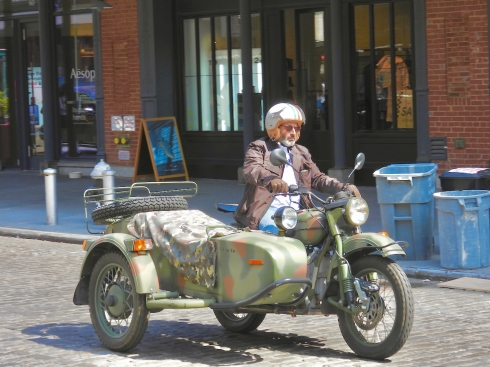









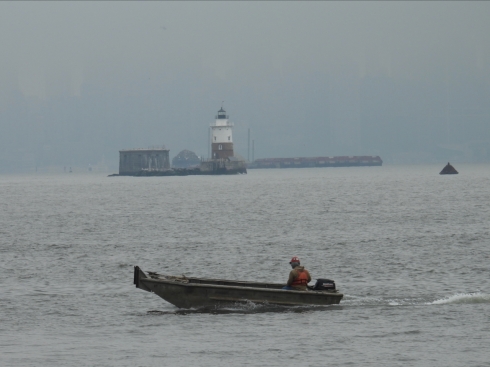







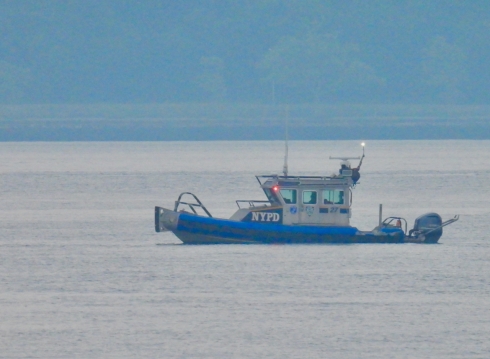


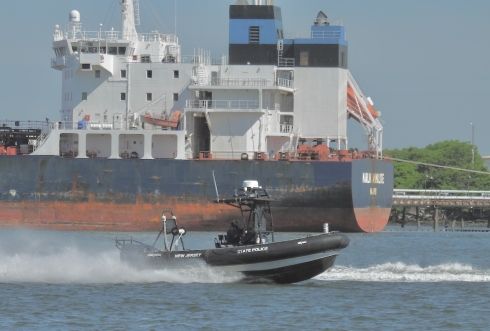





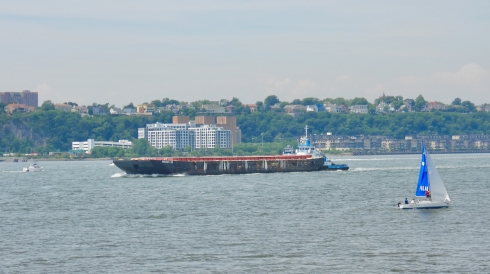

































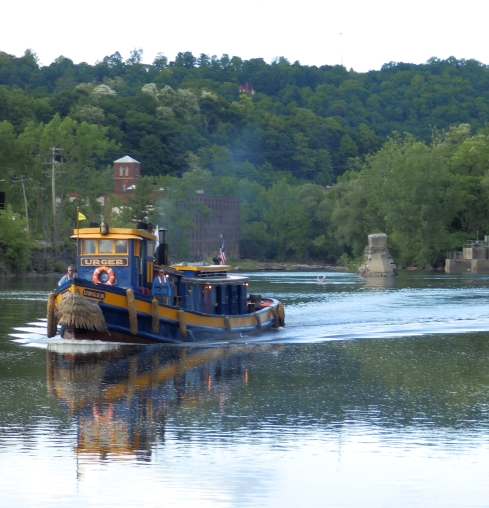








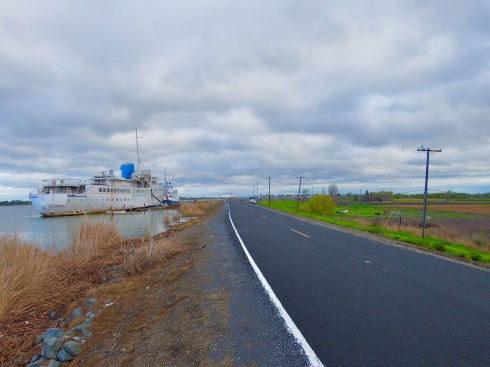



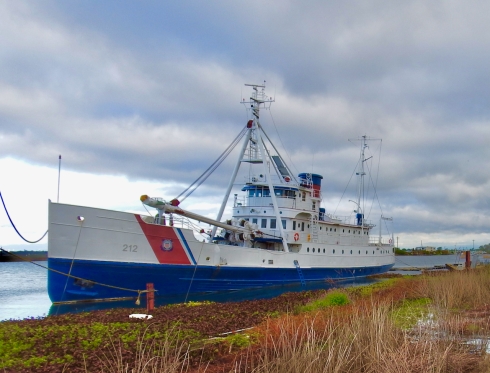















Recent Comments